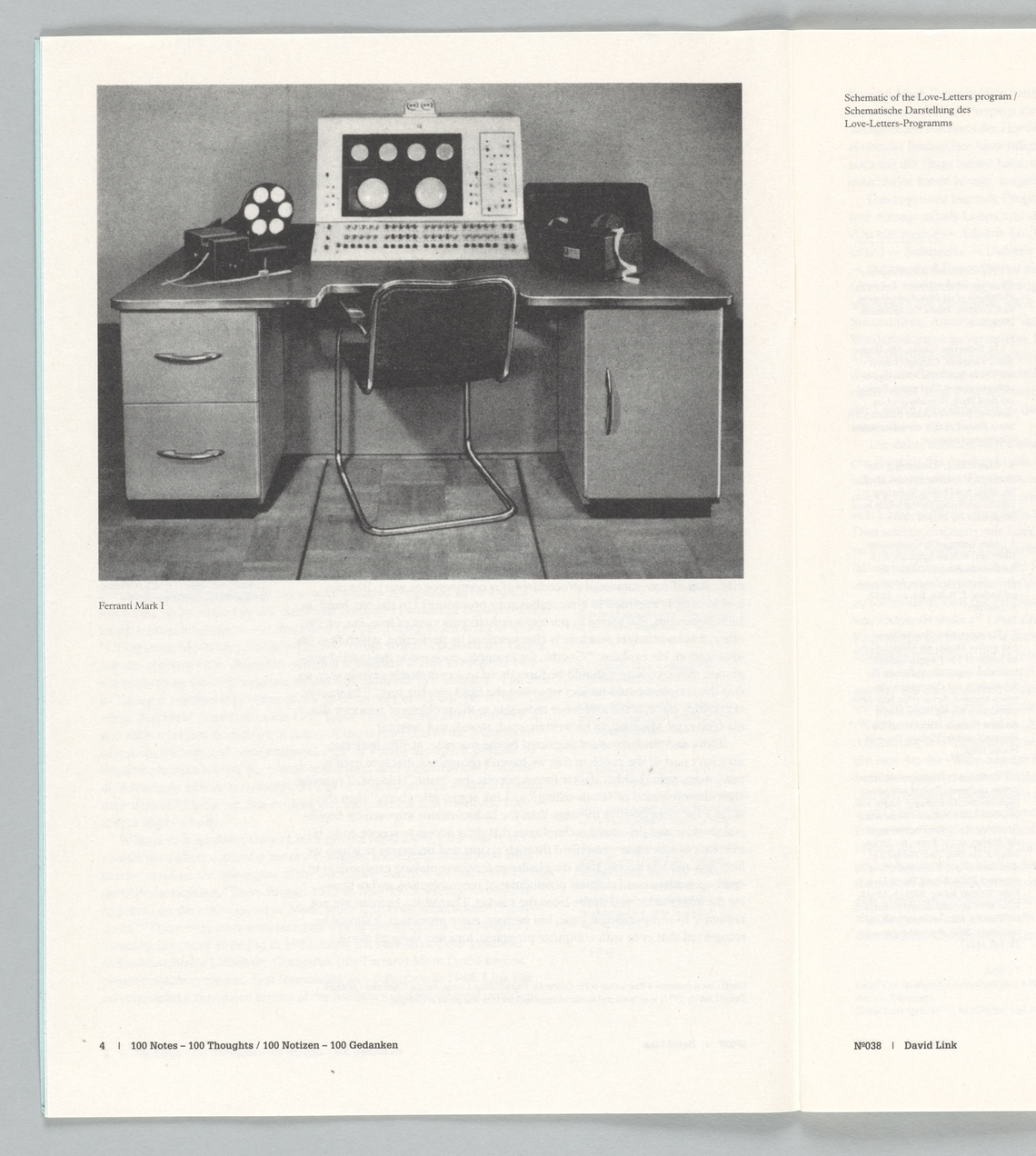Photo of Christopher Strachey's Love Machine (in Heart Machine)
-
Inspired by “Computing Machinery and Intelligence,” Christopher Strachey, Turing’s colleague at the National Research Development Corporation, designed a love-letter writing program that offered both a whimsical and technical challenge to the notion that only humans could speak about love.
Strachey’s program used only about 70 words and a simple template: “you are my [adjective] [noun]. my [adjective] [noun] [adverb] [verbs] your [adjective] [noun].” Yet, the simple text-generator produced a unique letter each time it was run (around three hundred billion different letters are possible)—and suggested that the lovelorn may not be so difficult for a machine to ventriloquize.
On display here is a photograph of “Ferranti Mark I,” the machine Strachey used to generate his love-letter program. The photograph is collected in a program for David Link’s “Machine Heart,” an exhibit about Strachey’s program.
Introduction
- Label
- Photo of Christopher Strachey's Love Machine (in Heart Machine)
- Author
- David Link
- Original Publication Date
- 2012
- New Publication Date
- 2012
- Publisher
- Hatje Cantz
- Location
- Butler Stacks
- Case
- 8
